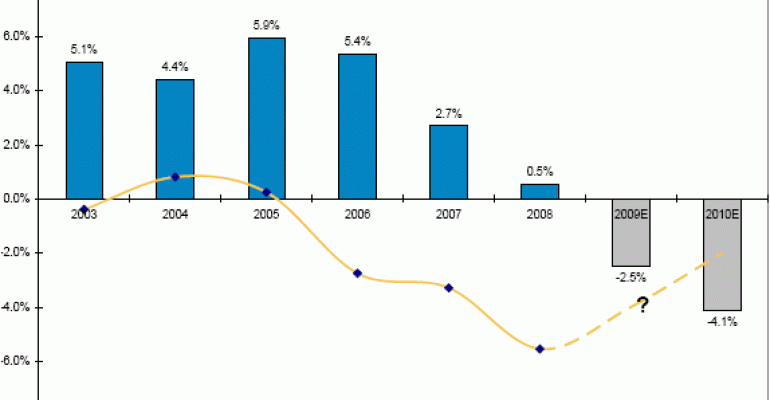NEW YORK Casual-dining chains should close a net of 1,200 locations, or about 7 percent of the segment’s capacity, to restore a supply and demand equilibrium with restaurant consumers, said John Glass, a securities analyst at Morgan Stanley.
Glass said Monday that because total traffic counts to casual-dining chain restaurants rose 2.5 percent between 2005 and 2008, while same-store traffic fell 4 percent, and the total number of locations increased by 9 percent, supply had outstripped demand. The segment must shrink from its current 18,000-plus locations to 2005 levels, which was the last time the nearly 17,000 units experienced positive aggregate same-store traffic counts, Glass said.
Closures already have started, he said, but more is needed.
“2008 was the first year in many in which there was no net unit growth in the industry,” Glass said, referring to the casual-dining segment. “That’s a good start, but given that industrywide same-restaurant traffic has been running negative since 2006, it probably isn’t enough.”
He forecast that casual-dining chains would close about 450 locations this year, with no material number of new unit openings, but that the segment still would need to close at least another 750 restaurants in 2010 and beyond. The capacity reduction would improve profitability to near 8.5-percent margins, based on earnings before interest and taxes, he added.
Casual-dining chains have been the hardest hit within the restaurant industry during this economic downswing, as the segment's higher price points and much older brands contributed to declining sales. The largest failure in the sector came when Bennigan’s owners filed for Chapter 7 liquidation last summer. Brinker International Inc., parent to 1,500 restaurants under the Chili’s Grill & Bar and other casual-dining brands, closed 47 restaurants in the fourth quarter of last year and said it would close an additional 35 locations this month. Ruby Tuesday Inc. said it would close nearly 10 percent of its 714 domestic corporate restaurants, with about 40 locations closed during its February-ended third quarter and another 30 units slated to close. Including franchised and international locations, the Ruby Tuesday system totaled about 942 locations.
For the fourth quarter of last year, average domestic same-store sales fell 7 percent among casual-dining chains operated by public restaurant companies, according to Nation’s Restaurant News research.
Glass’ study did not include independent casual-dining restaurants. It used population growth and expected changes in per-capita consumption to figure excess capacity and the number of closures that would be required to restore equilibrium. Two best- and worst-case scenarios also were built.
The worst case assumed that per-capita consumption falls to 20 times per year in 2009 and 2010, leading to a needed unit-count reduction of 2,358 units, or 13 percent of the sector. Conversely, the best-case scenario assumes that per-capita consumption increases to 23 times per year, which would require little to no capacity reduction. Glass noted that per-capita annual consumption during the past six years has ranged from a high of 22.5 in 2006 to a low of 21.8 in 2003, according to NPD Foodservice data.
Contact Sarah E. Lockyer at [email protected].

